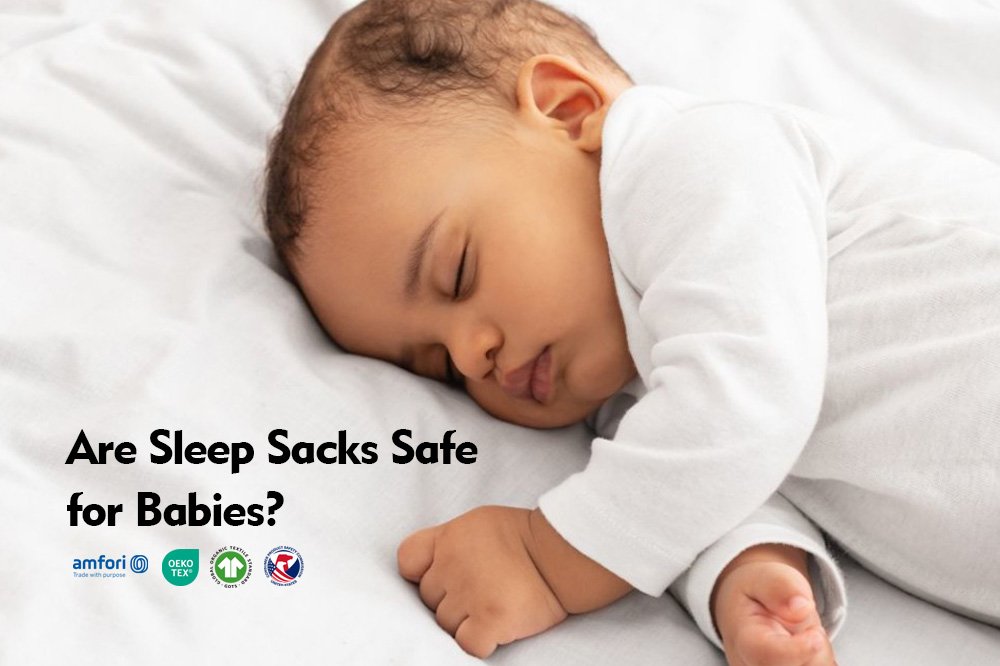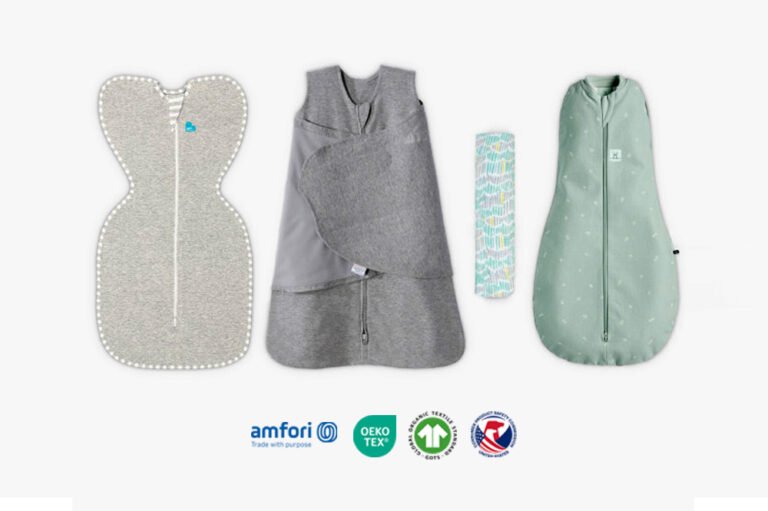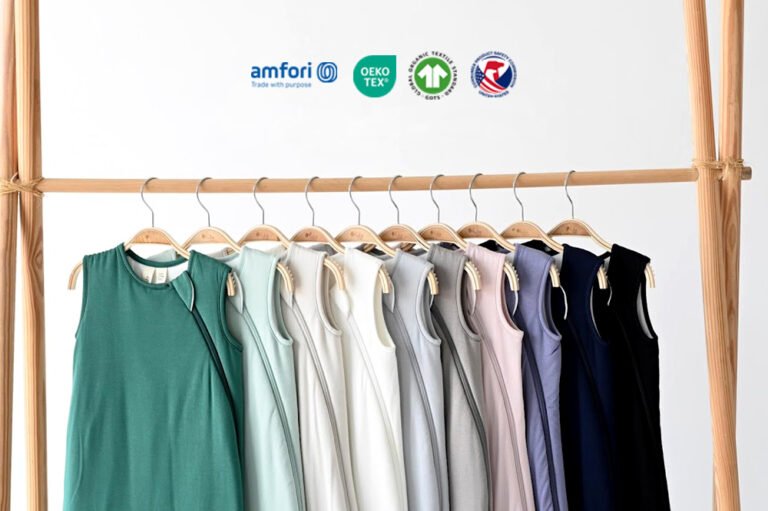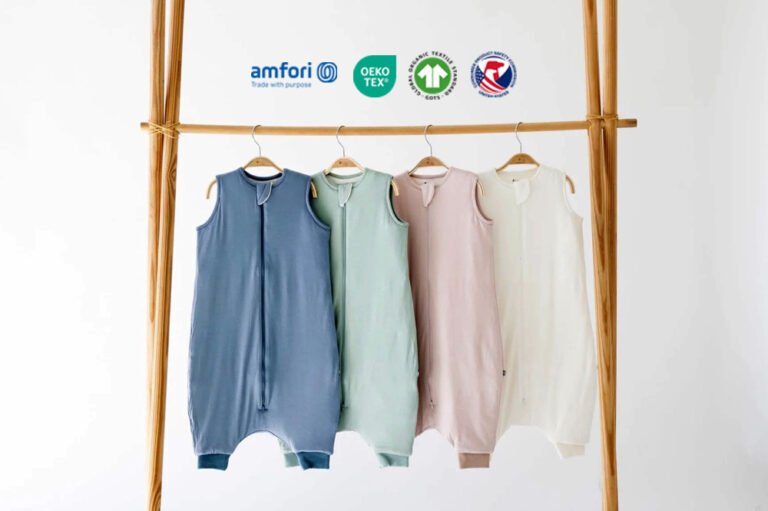
Sleep sacks have become increasingly popular among parents looking for a safer alternative to traditional blankets. The main concern for many parents is ensuring their baby sleeps safely and comfortably, and sleep sacks are designed to meet this need. But the question remains: Are sleep sacks safe for babies? In this article, we’ll dive deep into the safety aspects of sleep sacks, exploring expert opinions, current trends, and the materials that make them a secure choice for your little one.
What Are Sleep Sacks?
Sleep sacks, also known as wearable blankets, are essentially a sleeping bag designed for infants. Unlike loose blankets that can pose a risk of suffocation, sleep sacks fit snugly around a baby’s body while leaving their arms free, thus reducing the risk of Sudden Infant Death Syndrome (SIDS). These products are often made from soft, breathable materials such as organic cotton, bamboo fiber, or a blend of both, offering comfort without compromising safety.
Why Sleep Sacks Are Considered Safe
Sleep sacks are specifically designed to address safety concerns associated with infant sleep. Here’s why they are considered a safer option compared to traditional blankets:
1.Reduced Risk of SIDS
The primary safety concern with infants is SIDS, which has been linked to soft bedding and overheating. Sleep sacks are designed to stay in place, reducing the chances of covering a baby’s face, which can obstruct breathing. According to the American Academy of Pediatrics (AAP), using a wearable blanket like a sleep sack can lower the risk of SIDS by maintaining a safe sleeping environment.
2.Prevention of Overheating
One of the leading causes of SIDS is overheating. Sleep sacks are available in various TOG ratings, which indicate the thermal resistance of the material. By choosing the right TOG rating based on the room temperature, parents can ensure their baby stays warm without overheating.
3.Eliminating Loose Bedding Hazards
Loose blankets can easily get tangled around a baby’s face or body, posing a suffocation hazard. Sleep sacks eliminate this risk by providing a secure covering that stays in place all night long. This is particularly important for babies who have started to roll over, as they can move freely without getting entangled.
4.Promoting Healthy Sleep Habits
Sleep sacks also play a role in promoting healthy sleep habits. The consistent use of a sleep sack signals to the baby that it’s time to sleep, helping establish a routine. As a result, babies are more likely to sleep longer and more soundly, which is beneficial for both the infant and the parents.
Expert Opinions on Sleep Sack Safety
To further emphasize the safety of sleep sacks, let’s look at what some experts have to say:
- Dr. Rachel Moon, a pediatrician and SIDS researcher, states, "The safest sleep environment for a baby is a firm mattress with a fitted sheet and nothing else—except for a wearable blanket or sleep sack. These products are designed to be a safer alternative to loose bedding."
- The Lullaby Trust, a UK-based charity that advises on safe sleep for babies, endorses the use of sleep sacks, noting that they can prevent babies from wriggling down under covers and potentially suffocating.
- Dr. Fern Hauck, a family medicine physician and expert in SIDS prevention, adds, "Sleep sacks help reduce the risk of overheating, which is a known factor in SIDS. They also eliminate the need for additional bedding, making the sleep environment safer."
Choosing the Right Sleep Sack for Your Baby
Selecting the right sleep sack is crucial for ensuring your baby’s safety and comfort. Here are some factors to consider:
1.Material
When it comes to baby sleepwear, the material is of utmost importance. Opt for sleep sacks made from organic and breathable fabrics like bamboo fiber and organic cotton. These materials are not only gentle on a baby’s sensitive skin but also environmentally friendly.
2.Size and Fit
A properly fitting sleep sack is essential for safety. A sleep sack that is too large could ride up over the baby’s face, while one that is too small could restrict movement. Most manufacturers offer sleep sacks in various sizes, so it’s important to choose one that fits snugly around the shoulders while allowing ample room for leg movement.
3.TOG Rating
As mentioned earlier, the TOG rating indicates the warmth of the sleep sack. A higher TOG rating is suitable for colder climates, while a lower TOG is ideal for warmer environments. Always choose a sleep sack with a TOG rating that matches the room temperature to prevent overheating.
4.Design Features
Look for sleep sacks with convenient design features such as two-way zippers for easy diaper changes, and adjustable shoulder snaps for a better fit. Some sleep sacks also come with swaddle wings, allowing you to transition from swaddling to using a sleep sack as your baby grows.
Current Trends in Sleep Sack Manufacturing
The demand for sleep sacks has led to innovations in materials and designs, particularly in the realm of sustainability. Here’s what’s trending in the industry:
1.Sustainable Materials
Many manufacturers are now focusing on eco-friendly and sustainable materials such as bamboo fiber and organic cotton. These materials are not only safer for babies but also better for the environment. Bamboo fiber, for example, is naturally hypoallergenic, moisture-wicking, and temperature-regulating, making it an ideal choice for baby sleepwear.
2.Organic and Non-Toxic Certification
As awareness of the impact of chemicals on health grows, there’s an increasing demand for sleep sacks that are certified organic and free from harmful chemicals. Certifications such as GOTS (Global Organic Textile Standard) and Oeko-Tex ensure that the sleep sacks are safe for babies and produced in an environmentally friendly manner.
3.Customization and Personalization
Another trend is the ability to customize and personalize sleep sacks with your baby’s name or a unique design. This adds a personal touch and makes the sleep sack a cherished keepsake.
Conclusion: Are Sleep Sacks Safe for Babies?
In conclusion, sleep sacks are not only safe but are recommended by experts as a preferred alternative to loose bedding. They offer numerous safety benefits, including reducing the risk of SIDS, preventing overheating, and eliminating the hazards associated with loose blankets. By choosing the right material, size, and TOG rating, parents can provide a safe and comfortable sleeping environment for their babies.
For parents looking to make an eco-conscious choice, sleep sacks made from organic and sustainable materials such as bamboo fiber and organic cotton are an excellent option. These materials offer safety, comfort, and environmental benefits, making them a top choice for modern parents.






